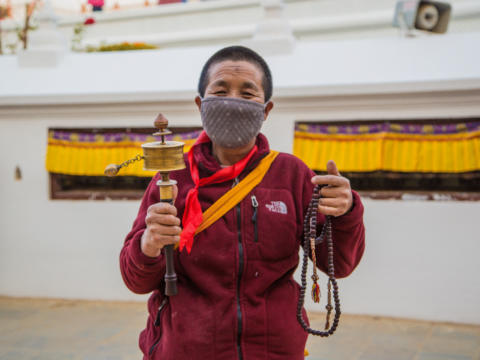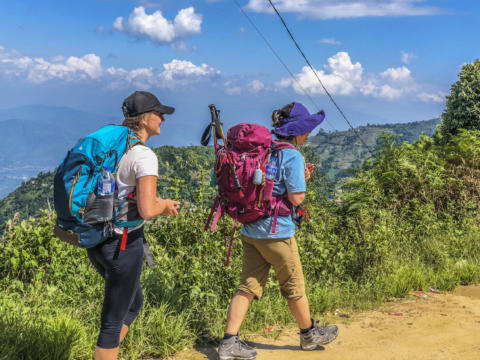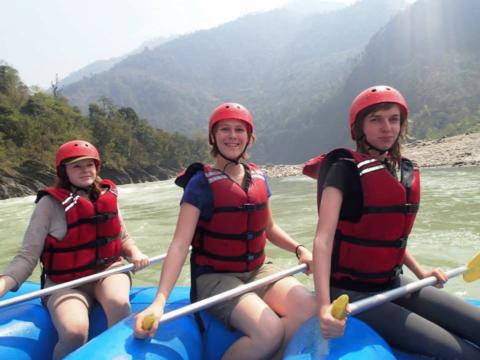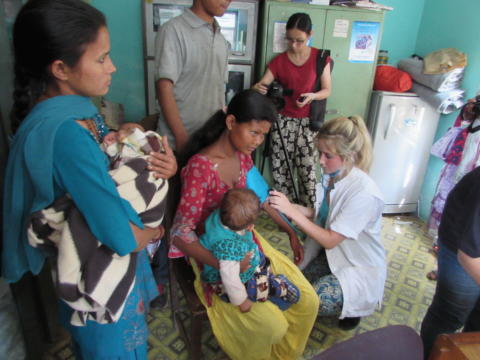Only 360€ per week!
Construction and Renovation Project
Kathmandu - Nepal
Construction and Renovation Project
Kathmandu - Nepal
Take part in the rebuilding efforts and support the needy communities in this beautiful Himalayan country.
Join us in our efforts to construct and renovate public buildings that require to be upgraded to provide a better standard of living for the communities. Therefore, we have taken up rebuilding projects in various areas of Kathmandu in restoring schools, hospitals, community centers and homes.
Program Description
You will be able to participate in renovation and construction activities in schools, children’s home, rehabilitation centers, KAT Centre (Kathmandu Animal Treatment Center), disabled children’s home and women empowerment center. During this project, you will be staying in Kathmandu at our center.
Your daily work would involve outdoor construction and renovation activities including, demolishing broken structures, building walls, painting, carpentry, fencing the school premises etc.
Aims & Objectives
To rebuild the damaged institutions such that the children can come back to attend schools and rebuild their future, and construct and renovate public buildings to create better standards of living for local communities.
Schedule
Monday to Friday
The activities vary depending on the needs at the time. However, the main tasks are the following:
- Bringing down broken structures
- Building walls using cement, sand, stone, bricks etc
- Painting
- Basic carpentry work
- Fencing the school premises
- Preparing mixture of cement, sand and water
- Shift rocks from one place to another
Note: This schedule can be changed and/or amended depending on weather conditions, local conditions and unforeseen circumstances.
Participant Criteria & Requirements
Standard Requirements
Minimum age: 18
Maximum age: –
Minimum English level: Basic
CRB required: On Signup
Passport copy required: On Signup
Resume copy required: No
Required qualification: None
Additional Requirements
Due to the active nature of this program, a decent level of fitness is required.
Additional Equipment
Casual dress is appropriate during your time at the project. However, no-see through clothes or low cut tops are permitted.
Location
Kathmandu, the capital and largest city in Nepal, is like no other city in the world. The decaying buildings in the heart of the city are a contrast to the lively atmosphere that permeates the streets. The smell of incense wafts from the stores while street sellers push their wares, and people go about their daily lives, all against a backdrop of historic temples and carved statues.
For several hundred years, Kathmandu was one of three rival royal cities, along with Bhaktapur and Patan. Situated in close proximity to each other, today these three almost run together. The highlight of Kathmandu has long been Durbar Square, the largest of the palace squares in the three royal cities and a UNESCO World Heritage Site. Temples and monuments of varying shapes, sizes, styles, and faiths can be found here.
Kathmandu's Durbar Square was severely damaged in the 2015 earthquake, with many buildings destroyed beyond repair.
For most visitors to Nepal, Kathmandu Valley is the arrival point and the primary focus of the visit. This small, mountain-sheltered valley is the historical center of Nepal, a place where kingdoms rose and fell, where palaces and temples were built and rebuilt, and where Nepali art and culture was developed and refined. Rivers and streams interlace with the landscape, the brick-red villages cling to ridges to preserve precious land and even from the bustling centers of each of the cities, it is possible to catch a glimpse of the snow-capped peaks of the majestic Himalayas against the intense blue skies.
About the Accommodation
There is a mini library where you can read, a beautiful garden to relax in and dining and lounge areas where you can hang out with fellow participants. Furthermore, there is a refrigerator which you are welcome to use to store food and beverages.
Food Arrangements
You will be provided with three meals a day on weekdays and two meals per day on weekends. The meals are a mix of Western and Nepalese food, consisting mainly of vegetarian dishes including rice and vegetables. You can expect to have a chicken dish about once per week. You can also choose to eat out at any of the local restaurants.
Facilities
Our house is located five kilometers away from the city center, where you can find anything you might need. The nearest ATM and supermarket are located a 15-minute walk away from our accommodation.
Activities & Events
No scheduled activities outside the program.
Sights & Surroundings
Shopping in Kathmandu is an experience in itself. Thamel, Kathmandu tourist hotspot, is where shoppers can find Nepalese, Tibetan and Indian artifacts, wood carvings, handicraft and an assortment of unique clothing and apparel. There are also several malls where you can find fashionable clothing and grocery stores offering everything from wine to breakfast cereals. There are numerous dining options available throughout the city, including Italian, Indian, Thai, Korean and Chinese in addition to a variety of local cuisine.
Transportation
From this location we provide free transport to your next program at the following location(s):
- Buddhist Monastery
- Kavre
- Mate
- Pokhara
Quick Facts
Name: Federal Democratic Republic of Nepal
Population: 28.98 million
Capital: Kathmandu
Language: Nepali
Currency: Nepalese rupee (NPR)
Time zone: UTC +5:45
Country Information
Namaste and welcome to Nepal, a country of high Himalayan Mountains, artistic monuments, exotic wildlife, and diverse cultures. Located between 80 12' east longitude and between 26 22' and 30 27' north latitude, Nepal extends along the south slopes of the Himalayas in central Asia.
Although Nepal is small, it has the greatest latitudinal variation of any country. The land rises from the southern plains of the Terai, barely above sea level at 70 meters, to the top of the Mt. Everest, the highest peak on Earth at 8848 meters above sea level, in a distance of less than 200 km.
Climate
Weather conditions in Nepal vary from region to region. Summer and late spring temperatures range from about 28C in the hill region of the country to more than 40C in the Terai. In the winter, the average maximum and minimum temperatures in the Terai range from a brisk 7C to mild 23C. The central valleys experience a minimum temperature often falling below the freezing point and a chilly 12C maximum. Much colder temperatures prevail at higher elevations. The Kathmandu Valley has a mild climate, ranging from 19 to 27C in the summer and 2 to 20C in the winter. In the winter, it only snows in the high elevations, around 9,000 feet. In the highest elevations, it snows year-round. The monsoon can last from mid-June to mid-August although the majority of the rain arrives in July.
Winter: From December to February, the mornings and evenings will be cold; in the daytime, you will be fine with a sweater or thin jacket.
Spring: From March to May is the best time to be in Nepal as it is neither hot nor cold. However, it does get quite windy.
Summer: June to August. Hot, humid and monsoon season.
Fall: Very pleasant and mild weather. It gets a bit windy but you will be fine with a sweater or a jacket.
Culture
Nepal's many ethnic groups are as varied as its land with their own languages and cultures. A wide variety of ethnic groups occupy the mid-hills. In the Kathmandu Valley the major population that we find is Newars, whose culture and artistry have earned them an international reputation. The Sherpas are known as tough mountain climbers. Brahmins and Chhetris are scattered over the hills and valleys, and Tamangs are found in the districts around the Kathmandu Valley. The Rais, Limbu, Gurung, Magars of the mid-hills have earned fame as Gurkha soldiers. Lowland ethnic groups such as Maithili, Bhojpuri, and Tharu enhance the colorful mosaic. The population of Nepal is about 28.98 million.
Transportation
Local Bus
One of the cheapest ways to get around Nepal. However, you get what you pay for! They are often crowded (and not just with people, sometimes even goats!). Most buses don’t depart until they get filled up, so it is not a good idea for those who have a tight schedule.
Tourist Bus
These are slightly more expensive than local buses but also more comfortable. Greenline buses offer routers between Kathmandu, Chitwan, Lumbini and Pokhara. It is recommended to book in advance to make sure you get a seat.
Taxis
Taxis are either private taxis as in any other cities or “10 Rupee” taxis, which are public. This means they don’t leave a place until they are full. The name, “10 Rupee taxis” does not mean they cost 10 Rupee! Do feel free to bargain





